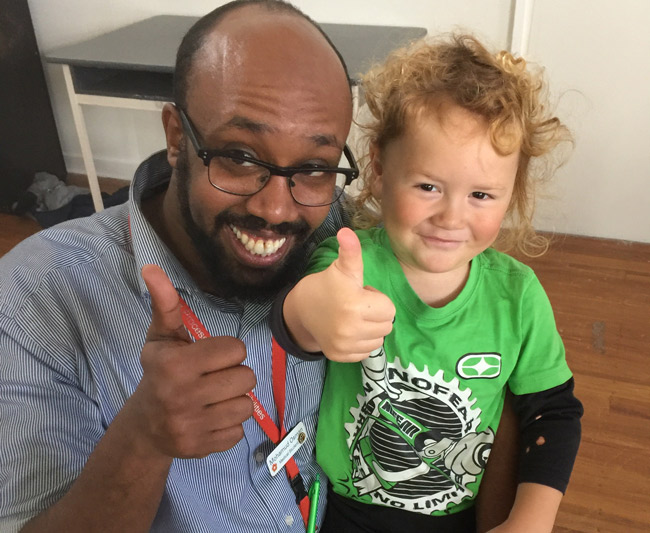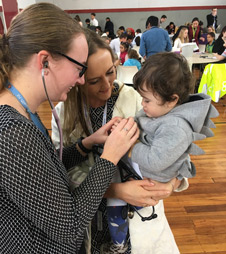
Christchurch campus medical students visited Te Pa o Rakaihautu to give health checks to children and be immersed in a Te Reo Māori environment.

Both the students and the children enjoyed the visit.
Christchurch fifth-year medical students gave health checks to children at a Te Pa o Rakaihautu as part of the campus' Hauroa Māori curriculum.
Associate Professor Suzanne Pitama is the campus' Associate Dean, Māori, and heads its Māori/Indigenous Health Institute (MIHI). She and her team have taken medical students to Christchurch Te Reo immersion schools for the past five years to benefit both the children and the future doctors.
This year, 90 medical students visited Te Pa o Rakaihautu, a special character school with Ngai Tahu kaupapa. They undertook paediatric screening to check students' ears, chest sounds, heart, blood pressure and vision. Paediatric staff from the University of Otago, Christchurch, and the Canterbury DHB's Paediatric Ophthalmology team also visited the kura to support the students in specialist checks.
"This allows our students to be in an immersed Te Reo Māori environment and engage in appropriate protocols such as Powhiri and mihiwhakatau."
Associate Professor Pitama says the medical students and the Kura provided positive feedback on the day overall. It provided a great opportunity for community engagement, and to support the Kura's commitment to promoting health and well-being within their school community.
Christchurch campus medical students have been doing paediatric community screening since 2010, Associate Professor Pitama says.
“In the past five years we have worked with Kura Kaupapa specifically for the screening visits. This allows our students to be in an immersed Te Reo Māori environment and engage in appropriate protocols such as Powhiri and mihiwhakatau. This is an initiative we feel contributes to the social accountability of the University of Otago, Christchurch, and allows students to see a healthy positive Māori learning environment that embraces indigenous pedagogies and learning methods.”
